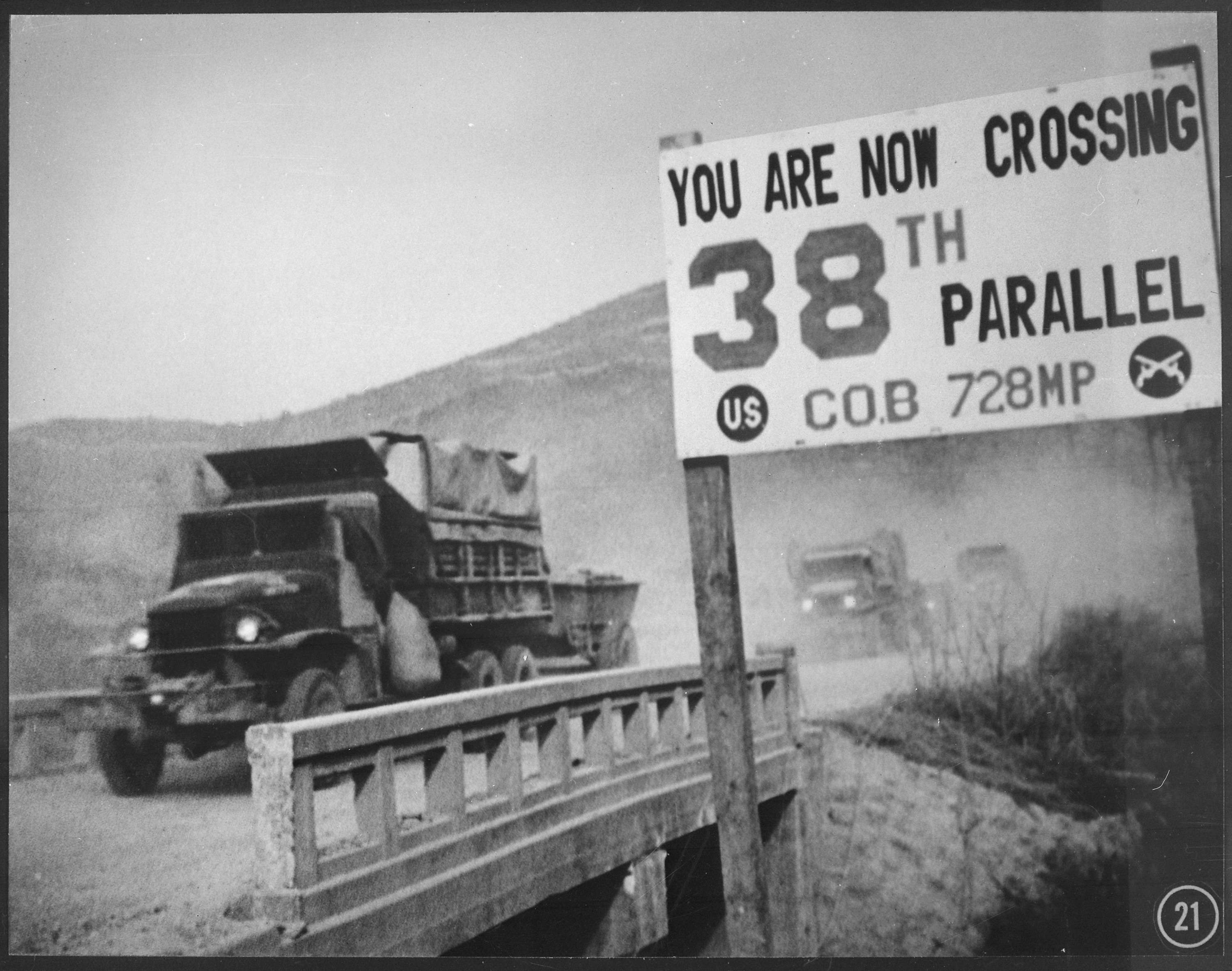Phase 2 & 3: UN Offensive & CCF Intervention
UN forces, primarily consisting of U.S. troops, intervened in the war to support South Korea. This is one of the first instances where the United Nations took military action to resolve a conflict. Some see this involvement of the UN as a strategy of the United States to garner international support and legitimacy for its intervention in the war.11,12 While this intervention did send a message that the UN was ready to support a collective response against aggression, it also prompted the Communist Chinese Forces (CCF) to join in the war in support of North Korea.12
Eventually, in November 1950, General MacArthur strategically withdrew from the battle and regrouped below the 38th Parallel, focusing on a defensive perimeter and other UN efforts.6,8 As a note, the 38th parallel is a latitude that serves as a boundary line between North Korea and South Korea. Thus, below the "38th Parallel" means withdrawing to South Korea. This decision was part of a larger strategic move to regroup the UN forces in the face of the Chinese intervention in the Korean War.8

